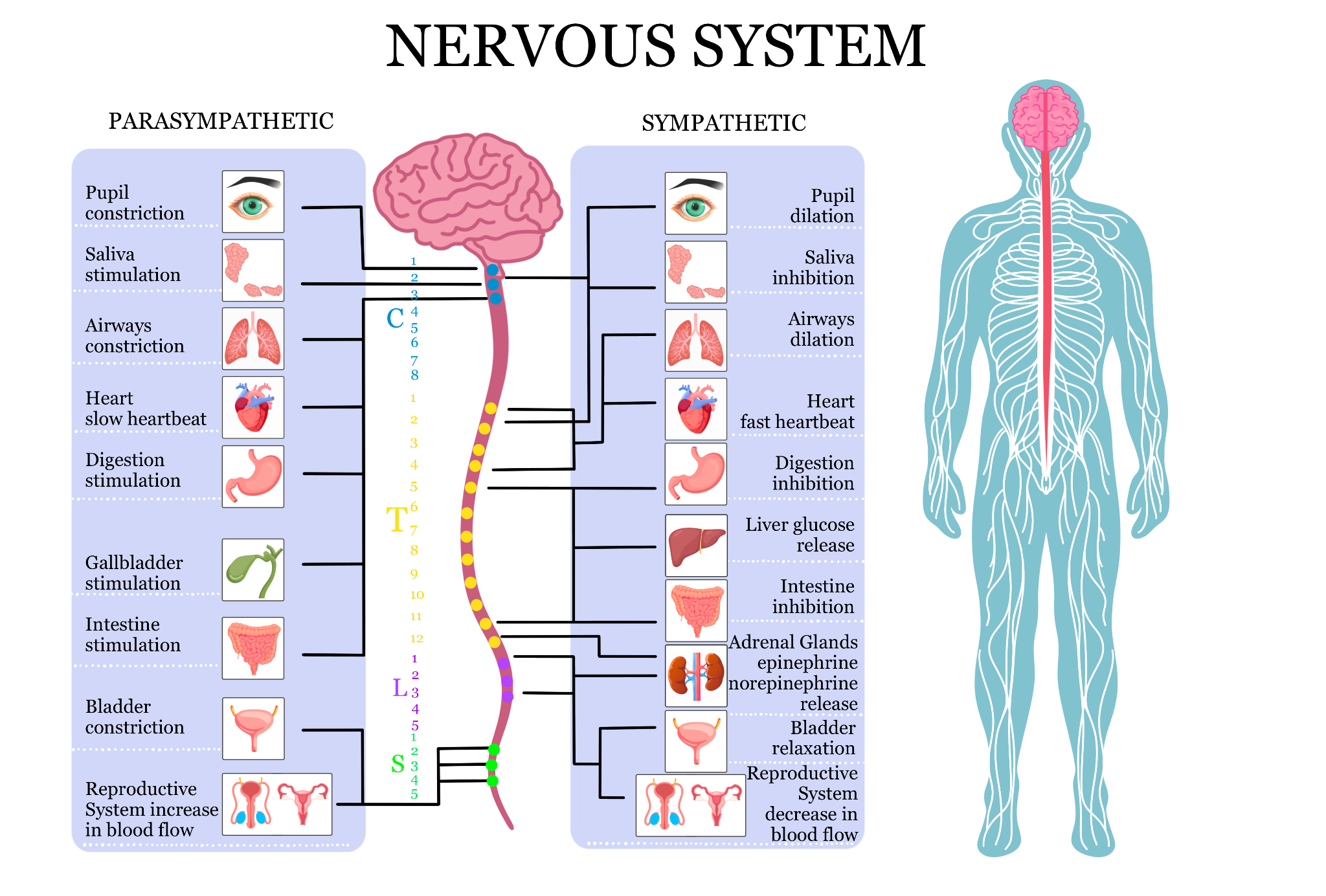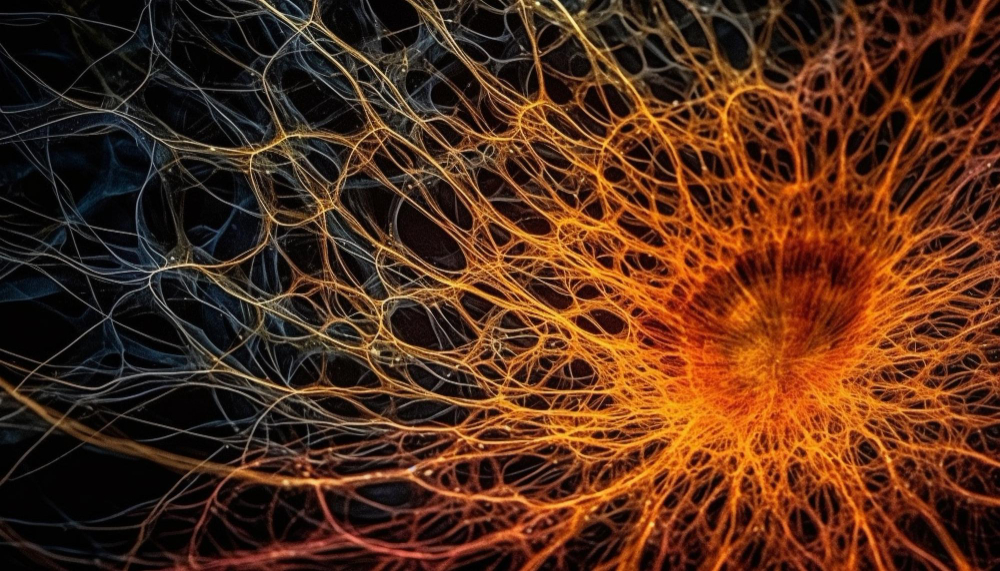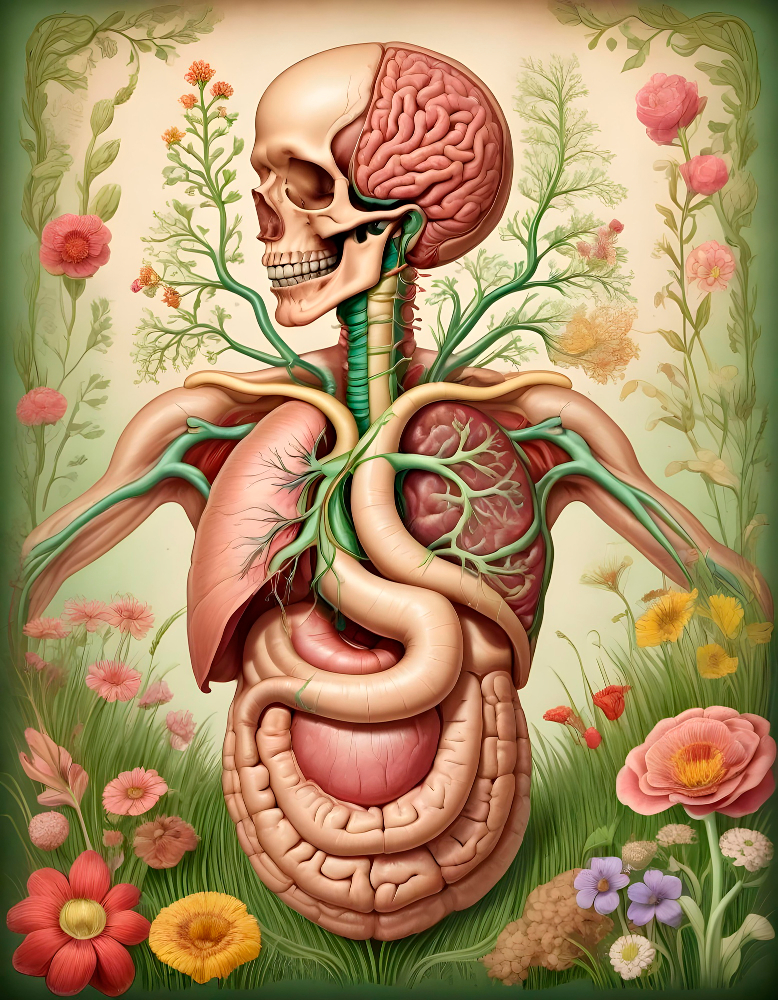The nerves in your body can travel at speeds of up to 270 miles per hour. This immense speed contributes to the rapid reaction times that allow humans to respond quickly to their environment. The nervous system is divided into two main sections: the central nervous system (CNS) and the peripheral nervous system (PNS). Each section has distinct functions and responsibilities.
The central nervous system consists of the brain and spinal cord. It contains relay neurons (interneurons) that carry sensory information and help regulate motor activity. The peripheral nervous system includes spinal nerves, cranial nerves, and peripheral nerves. It is further divided into two subdivisions: the somatic nervous system, which controls voluntary movements, and the autonomic nervous system, which regulates the body’s internal environment. The autonomic nervous system is divided into the sympathetic and parasympathetic systems. The sympathetic system mobilizes energy resources; for example, during a dangerous situation, it increases blood pressure, heart rate, and sweating, preparing the body for a fight-or-flight response. Conversely, the parasympathetic system conserves energy by promoting digestion and salivation while decreasing heart rate, creating a “rest and digest” state.
Both the somatic and autonomic nervous systems contain sensory neurons and motor neurons. Sensory neurons are activated by sensory input and generate responses, particularly in the muscles. The nervous system has three primary functions: sensory input, integration, and motor output. Sensory input involves detecting stimuli or threats, integration consists of processing this information to determine an appropriate response, and motor output executes the response decided by the nervous system. This provides a basic explanation of how the nervous system functions. In organisms, the complexity of the nervous system often reflects the organism’s complexity. Larger organisms usually have more intricate nervous systems to support their larger and sophisticated bodies.
Various disorders can affect the nervous system and cause harm. Neurodegenerative diseases, autoimmune disorders, and traumatic injuries can all impact the nervous system. For example, dementia is a disease that damages neurons in the brain and weakens their connections within the hippocampus and entorhinal cortex, which are involved in memory. According to the National Institute on Aging, “Dementia later affects areas in the cerebral cortex responsible for language, reasoning, and social behavior.”

The spinal cord is a vital part of the nervous system and is protected by vertebrae, which are rings of bone surrounding it. A protective membrane also covers the spinal cord and the vertebrae, forming the spinal column. The spinal cord functions as a communication system between the brain and the rest of the body, with neurons carrying messages throughout. Spinal cord injuries can disrupt movement and sensation, with injuries higher on the spinal cord generally causing more severe damage. The vertebrae are divided into sections that perform various functions. A diagram of the spinal cord and its sections can help illustrate which parts of the body they communicate with.
The communication between neurons is fascinating. Neurons use a sodium-potassium pump to create an electrochemical gradient. This process involves pumping two potassium ions into the neuron cell and three sodium ions out. There are also negatively charged proteins inside the neurons, which contribute to the negative charge inside the cell compared to the extracellular space. This creates an electrochemical gradient characterized by an uneven distribution of molecules and charges. This gradient allows neurons to communicate through electrical and chemical signals. When the electrical signal reaches the gap between two neurons, it is converted into a chemical signal that crosses the synapse to the next neuron. These chemical signals are known as neurotransmitters.
To sum it up, the nervous system consists of the central nervous system and the peripheral nervous system. Both systems rely on neurons to communicate with different parts of the body. Neurons use a sodium-potassium pump to establish an electrochemical gradient for communication, and neurotransmitters facilitate the transmission of messages throughout the body. The nervous system is a compelling network used by our body to transmit messages between the brain and other parts of our body. The nervous system controls almost every function in our body. Without it, our body would be unable to move, communicate, or have any sensory processing, and we would almost instantly die as a result.
Sources: Neuroscientifically Challenged on YouTube, Queensland Brain Institute, Cleveland Clinic, National Institute of Aging, Shepherd Center on YouTube



